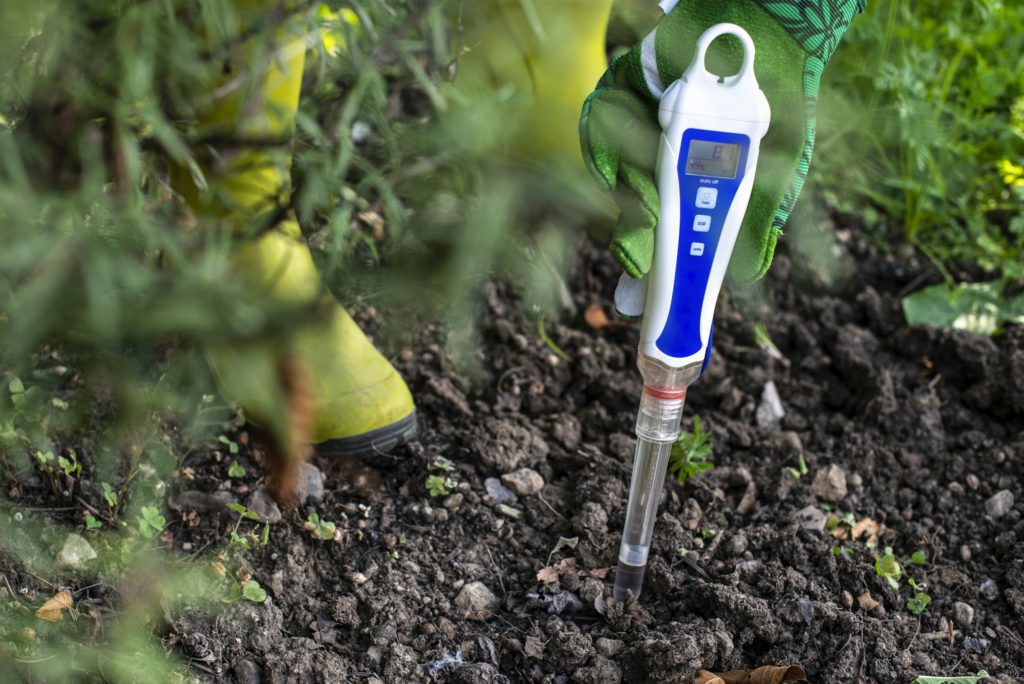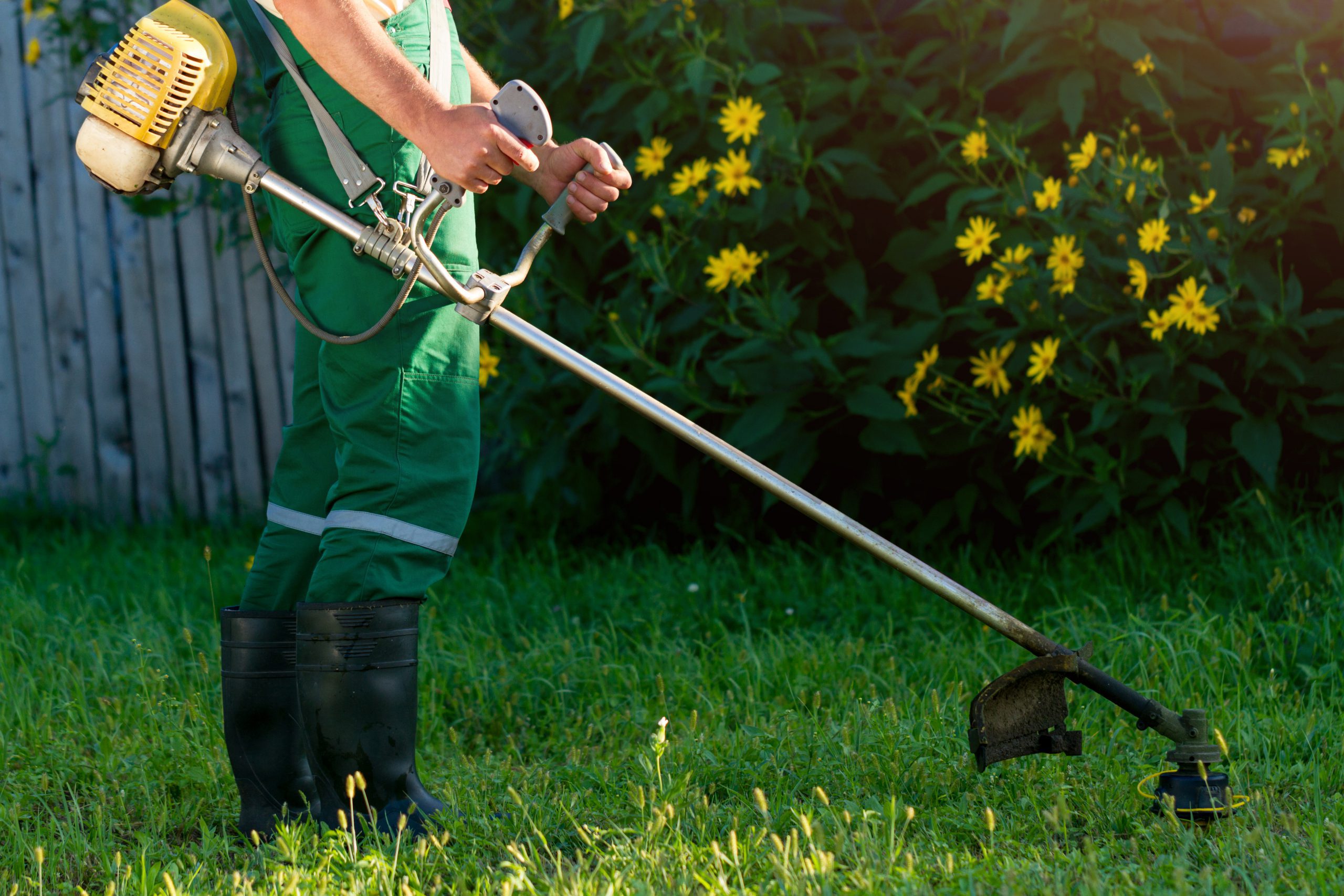You might think lawn pH isn’t essential, but maintaining the right level is important for healthy grass. Generally, the ideal pH range is between 6.0 and 7.0. This balance guarantees efficient nutrient absorption and robust growth. Regular testing, ideally in spring and fall, helps monitor these levels. If adjustments are necessary, lime is used to raise pH, while sulfur can lower it. But how do you make sure your lawn thrives in every season?
Why Lawn pH Levels Matter More Than You Think
You should understand that pH measures the acidity or alkalinity of your lawn’s soil, and it greatly affects grass health. When soil pH is off-balance, you’ll notice symptoms like yellowing, slow growth, and increased weed invasion, indicating nutrient deficiencies or toxicities. Regularly test your soil pH to guarantee it remains in the perfect range, facilitating best nutrient absorption and strong lawn health.
Easily hire the best lawn & landscape pros working in your neighborhood.
What Is pH and Why Should Lawn Owners Care?
Understanding the concept of soil pH is essential for lawn owners because it directly affects the health and growth of grass. Soil pH measures acidity or alkalinity, impacting nutrient availability in your lawn. Grass thrives when the pH is between 6.0 and 7.0. Acidic soils, with a pH below 6.0, can lead to nutrient deficiencies and poor growth.
- Regular pH testing identifies imbalances.
- Adjusting soil pH guarantees ideal nutrient absorption.
- Acidic soils require lime to raise pH levels.
- Alkaline soils may need sulfur to lower pH.
Maintaining balanced pH supports healthy grass and effective fertilization.
Signs Your Lawn Soil pH Might Be Off-Balance (yellowing, slow growth, weed invasion, etc.)
Even if you’ve been diligent in watering and fertilizing, certain signs like yellowing grass, slow growth, or increased weed presence might indicate your lawn’s soil pH is off-balance. Yellowing often results from nutrient deficiencies caused by low pH, limiting nutrient availability. Sparse patches suggest pH imbalance, affecting nutrient absorption. Weed invasions, particularly clover and dandelions, thrive in alkaline conditions, outcompeting grass. Moss in shaded areas signals acidic soil environments.
| Symptom | Potential Cause |
|---|---|
| Yellowing grass | Low soil pH |
| Slow growth | Imbalanced pH |
| Weed invasion | Alkaline soil conditions |
| Moss growth | Acidic soil conditions |
| Nutrient lockup | Imbalanced soil pH |
Maintaining ideal lawn health requires regular pH testing to prevent nutrient lockup.
The Ideal Soil pH for a Healthy Lawn
To maintain a healthy lawn, achieving the ideal soil pH is essential, as it directly influences nutrient availability and grass health. The ideal pH for most lawns ranges from 6.0 to 7.0. This range guarantees peak nutrient absorption, including nitrogen, phosphorus, and potassium. Maintaining your soil’s pH within this range involves:
- Monitoring pH levels regularly through soil testing.
- Applying lime to raise the pH if below 6.0 (acidic).
- Using sulfur to lower the pH if above 7.0 (alkaline).
- Observing grass health indicators like thin growth or discoloration, which suggest potential pH imbalances needing corrective intervention.
How to Test Your Lawn’s pH Level (And Do It Right)

To accurately measure your lawn’s soil pH, gather essential tools such as a home soil pH test kit and distilled water. Guarantee precision by taking soil samples from multiple spots and combining them for a representative sample. Remember to use distilled water during testing to prevent tap water minerals from affecting the pH readings.
Tools You’ll Need to Measure Lawn Soil pH
Testing your lawn’s soil pH accurately requires specific tools and techniques. To assess pH levels, start with a reliable soil test. You’ll need a few essential items to guarantee precise measurements:
- Soil Test Kit: Offers a straightforward way to determine pH levels at home.
- Distilled Water: Mixes with soil to avoid mineral interference from tap water.
- Garden Trowel: Collects consistent soil samples from various lawn locations.
- Sample Containers: Keeps soil intact for lab analysis or further testing.
Testing in spring and fall provides insights into seasonal pH variations, assisting in maintaining an ideal range for grass health.
Pro Tips for Getting Accurate Results
After gathering your tools, attaining precise soil pH readings hinges on careful sampling techniques. Begin by collecting soil samples from multiple yard locations to capture diverse conditions. Use a reliable soil testing kit or consider sending samples to a local extension service for thorough analysis of pH level and nutrients. Guarantee accuracy by mixing samples with distilled or rainwater, avoiding tap water, which can skew results. Conduct soil testing during spring or fall for timely pH adjustments. Retest annually to monitor changes as environmental factors can alter soil pH over time, assuring your lawn’s ongoing health and ideal growth.
Easily hire the best lawn & landscape pros working in your neighborhood.
Adjusting pH Naturally: Lime, Sulfur, and Smart Lawn Care
To effectively adjust your lawn’s soil pH, apply lime to raise pH in acidic conditions or sulfur to lower pH in alkaline soils, ensuring application in fall or early winter for ideal integration. Avoid common mistakes like overapplication or neglecting soil testing, as these can lead to nutrient imbalances and poor grass health. Regularly monitor soil pH through testing to maintain a balanced environment, supporting nutrient availability and robust grass growth.
How to Apply Lime or Sulfur Effectively
Effectively adjusting your lawn’s pH with lime or sulfur is essential for maintaining ideal grass health. Begin with a soil test to determine if your soil’s pH needs correction. If it’s below 6.0, apply lime to raise the pH, enhancing nutrient availability. Conversely, use sulfur when pH exceeds 7.0 to lower it. Follow these steps:
- Use a drop spreader for uniform lime or sulfur distribution.
- Apply lime in the fall, allowing months for soil integration.
- Water immediately after application to aid dissolution and soil penetration.
- Avoid over-application to prevent drastic pH shifts and nutrient deficiencies.
Mistakes to Avoid When Correcting Lawn Soil pH
While aiming to optimize your lawn’s pH, it is crucial to recognize common mistakes that could derail your efforts. Over-application of lime or sulfur can drastically shift soil pH, causing nutrient imbalances. Always conduct a soil test first to determine the current pH level and necessary adjustments. Apply amendments like lime and sulfur in the fall, allowing gradual soil pH changes. Thoroughly mix them into the soil for uniform distribution.
| Mistake | Solution |
|---|---|
| Over-application | Conduct soil tests to determine exact needs |
| Poor timing | Apply lime/sulfur in fall for gradual change |
| Uneven distribution | Mix amendments thoroughly for even pH balance |
Monitor soil pH annually.
Maintaining a Balanced Lawn pH Through the Seasons
Although maintaining a balanced lawn pH can seem complex, understanding seasonal influences on soil acidity is vital. Start by collecting soil samples from various lawn sections to accurately assess your lawn’s pH. Regular testing guarantees you monitor pH changes throughout the year, especially after seasonal shifts. Implement these strategies:
- Apply lime or sulfur in fall: Alter pH effectively before the growing season.
- Maintain consistent moisture: Helps dissolve amendments, enhancing their effect.
- Observe grass health: Detect signs of pH imbalance early.
- Retest annually: Adjust treatments to maintain ideal pH between 6.0 and 7.0.
These steps help sustain vibrant, healthy grass.
Want Help Managing Your Lawn’s pH? LawnGuru Makes It Easy
Managing your lawn’s pH doesn’t have to be a challenging task when you have the right tools and guidance from LawnGuru. Start by testing your soil to guarantee it falls within the best pH range of 6.0 to 7.0. If your soil is too acidic, LawnGuru recommends applying lime to increase the pH, enhancing nutrient availability. Conversely, if your pH is too high, sulfur applications can effectively lower it. By monitoring pH levels regularly, you’ll prevent nutrient lockup and promote healthy grass growth. LawnGuru provides expert advice, guaranteeing your lawn remains resilient against environmental stressors and thrives beautifully.





